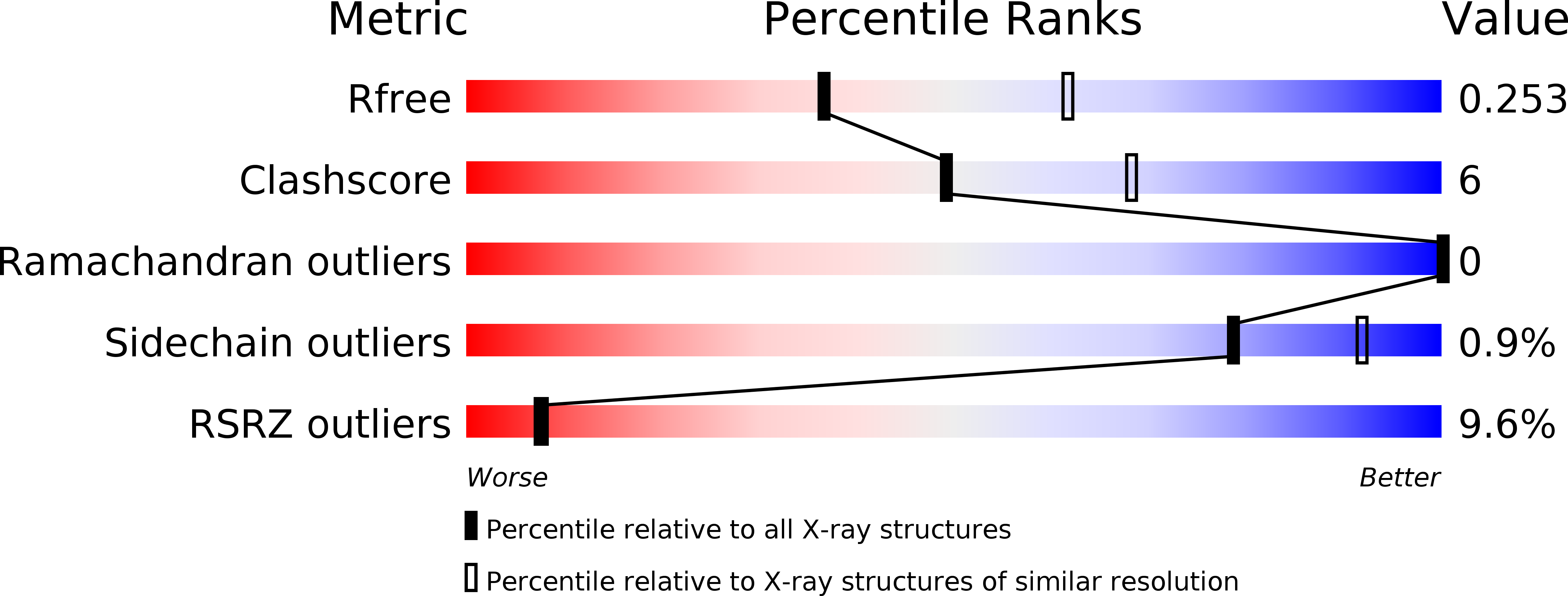
Deposition Date
2018-10-05
Release Date
2019-01-30
Last Version Date
2024-03-13
Entry Detail
PDB ID:
6MOY
Keywords:
Title:
Crystal structure of the E257A mutant of BlMan5B in complex with GlcNAc (co-crystallization)
Biological Source:
Source Organism:
Bifidobacterium longum (strain DJO10A) (Taxon ID: 205913)
Host Organism:
Method Details:
Experimental Method:
Resolution:
2.50 Å
R-Value Free:
0.25
R-Value Work:
0.22
R-Value Observed:
0.22
Space Group:
P 21 21 21


